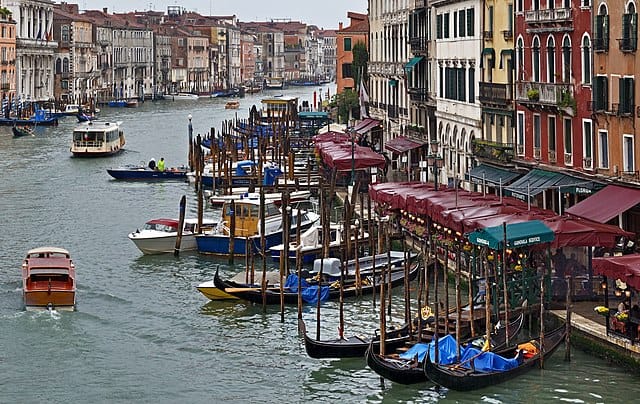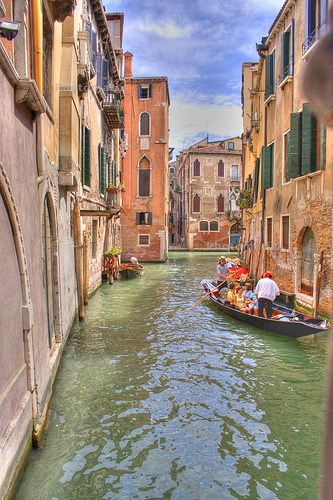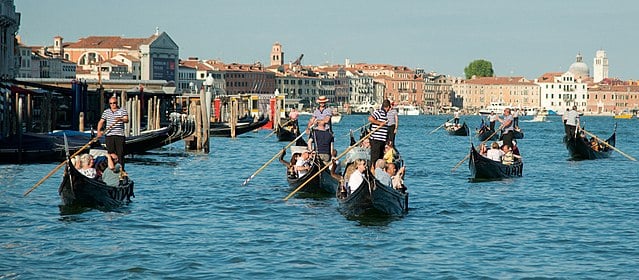Welcome to an enchanting place that has captivated travelers for centuries with its intricate network of canals, stunning architecture, and rich cultural heritage. Today, I invite you to join me in discovering Venice with some of its little known history.
Did you know Venice was liberated by New Zealand? Neither did I.
But as you are about to find out, this blog is much more than wit, sarcasm, and pithy paragraphs. This is an educational travel blog!
The Queen of the Adriatic
Venice is actually spread over 118 little islands in the marshy saltwater of Venice Lagoon.
It was once known as the Queen of the Adriatic due to its historical, cultural, and economic importance as a major city in the Adriatic Sea.
During its heydays, it was most famous for its maritime clout and trade routes during the Middle Ages and the Renaissance. In addition, Venice is renowned for its opulent palaces, churches, and art.
Nowadays, Venice is very popular for its stunning architectural designs and its rich musical history, with special emphasis on the celebrated musician and native son, Vivaldi.
Liberated by Kiwis
Venice has a rich history as a republic, dating back to the establishment of the Latin Empire. It was once the most prosperous city in Europe, thanks to its thriving trade routes and nautical dominance.
However, in 1797, Venice was conquered by Napoleon Bonaparte, who was seen as a liberator by some. He allowed the Jews living in the city to enjoy freedom to live, travel, and discover where they pleased.
Venice’s past is full of twists and turns, with different conquerors taking control of the city over the years. After Napoleon’s conquest, it was passed back and forth between Austria and Italy, with its fate constantly changing.
Finally, on April 29, 1945, the city was liberated by New Zealanders, marking a turning point in its history. Go Kiwis!
The Kiwis played a significant role in liberating Venice during World War II, and their contribution is remembered with gratitude to this day.
The Grand Canal
The Grand Canal is the main waterway in Venice, and it’s often described as the city’s main street. It’s a beautiful place to explore, and there’s so much to see and do here.
One of the things I love most about the Grand Canal is the way it changes throughout the day. In the morning, the canal is quiet and peaceful, and you’ll see locals going about their daily routines.
In the afternoon, the canal comes alive with tourists, and the cafés and restaurants along the water are bustling with activity.
One of the best ways to experience the Grand Canal is by taking a water taxi or gondola ride. These rides allow you to see the city from a unique perspective and get up close to some of Venice’s most iconic landmarks. As you glide along the water, you’ll see stunning palaces, historic bridges, and charming houses lining the canal.

One of the most famous buildings along the Grand Canal is the Rialto Bridge, a stunning stone bridge that spans the waterway.
There is also the stunning Doge’s Palace, which was once the residence of the Doge of Venice, or the chief magistrate and leader of the Republic of Venice. It is now a museum.
As you continue down the canal, you’ll also see the beautiful Basilica di Santa Maria della Salute, a stunning church with a distinct dome.
Pro tip:
To truly appreciate the beauty of the Grand Canal, plan your visit during the golden hour. This is the time just before sunset, when the light is soft and warm, casting a magical glow on the city. The buildings and landmarks along the canal are bathed in a golden light, creating a stunning visual experience.
The Sinking City
Discovering Venice would not be complete without discussing the city’s unique architecture. As you know, this is a city standing on stilts. Wooden pilings to be exact. And most of you will think that wood turns into rotten flotsam in water. But no!
In fact, wood becomes petrified in mineral-rich water when there is no oxygen. Thus, Venice is standing on rock hard pillars. But, and there is a but, the buildings are often threatened by flood tides.
It turned out that some silly people in the 20thC dug artesian wells in the lagoon, which took too much water out. This activity exposed the wood to the breeze (am I boring you yet??) and so began the danger.
However, they wised up and banned wells in the 1960s. Today, Venice is still technically under a state of a sinking alert, but some say the problems are resolved.
Discovering Venice is not only an enchanting experience, but it is also an opportunity to delve into its rich and captivating history.
From its glorious days as Europe’s most prosperous city to the heroic liberation by New Zealanders and its unique foundation on rock-hard pillars, Venice is truly an extraordinary destination to explore.
Are you planning a trip to Venice and want to make the most of your time in this stunning city? Join my Italy tour 2023 to discover all the best sights and experiences that Venice has to offer.
Join my Italy tour 2023
Are you planning a trip to Venice and want to make the most of your time in this stunning city? Join my Italy tour 2023 to discover all the best sights and experiences that Venice has to offer.


